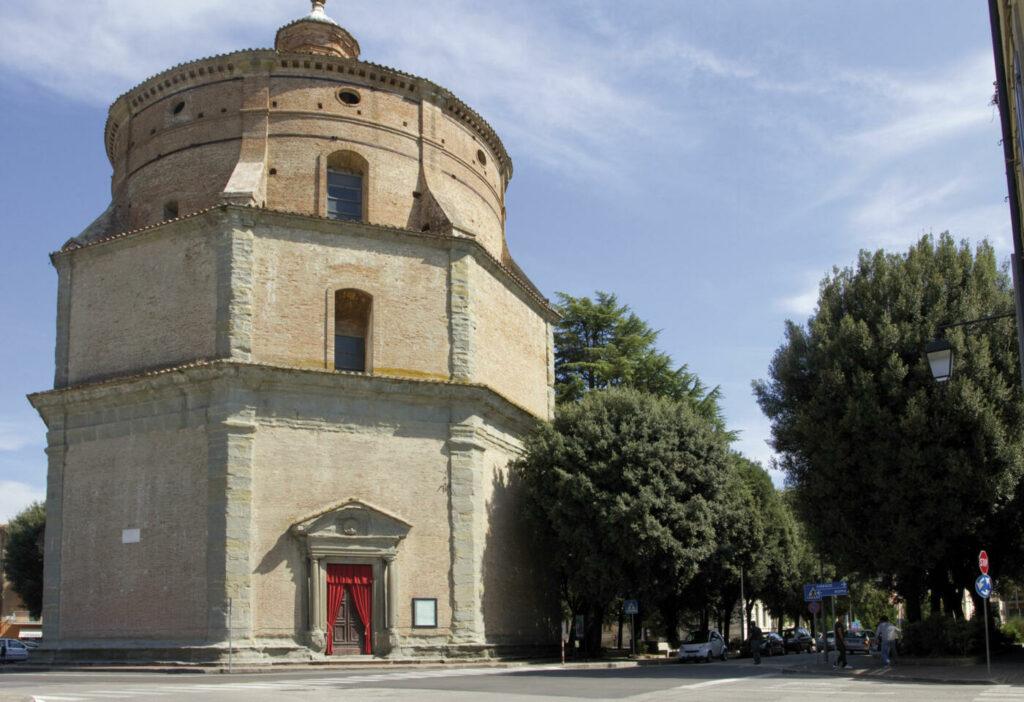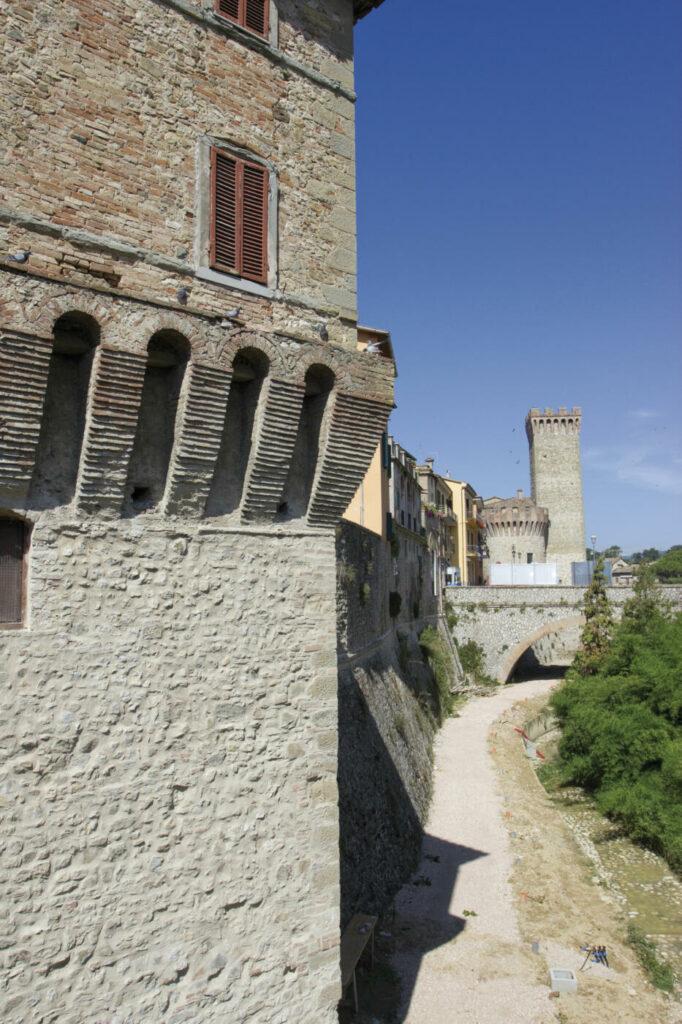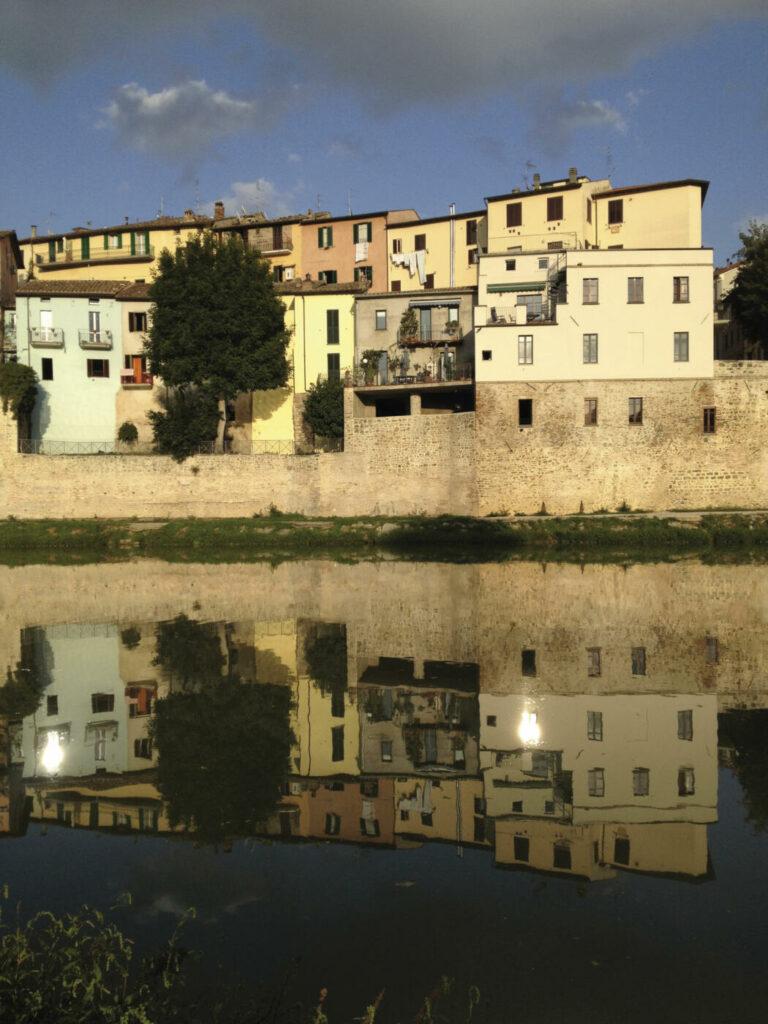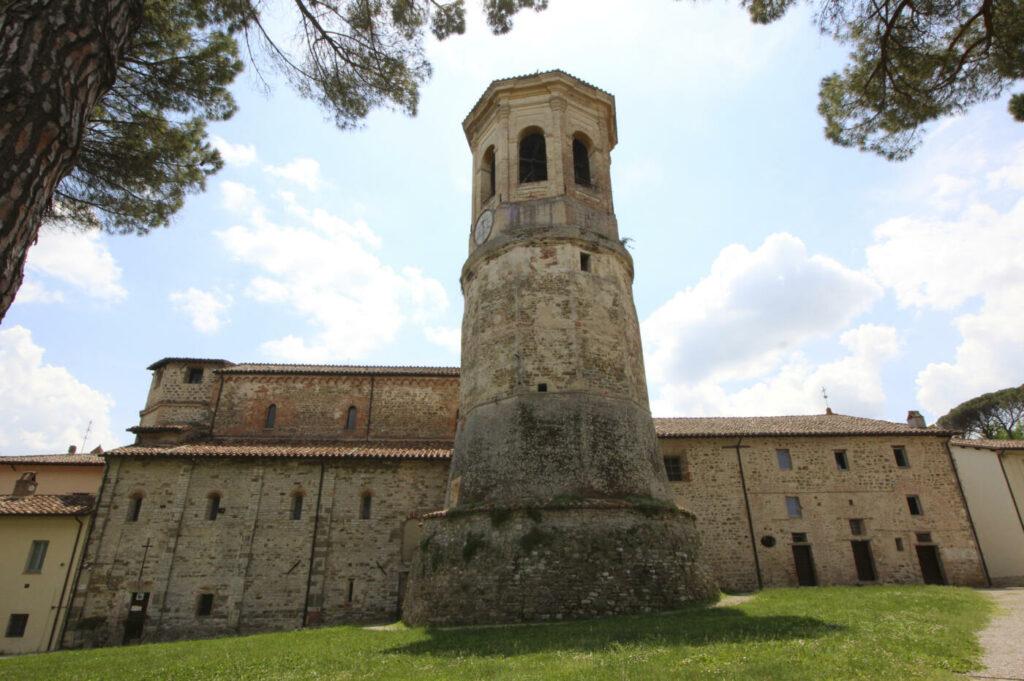Umbertide
Umbertide is the southern-most town in the Upper Tiber Valley and the last exit on the E45 highway.
It is the second largest and most populated town in the valley after Città di Castello.
It was already well-known in ancient times, when it was an important centre for trade between the Umbrians and the Etruscans on the banks of the Tiber.
Umbertide
It was destroyed by the Goths in the 6th century CE and, according to legend, was rebuilt where it now stands by the sons of Uberto, the Marquis of Tuscany.
For this reason, it was called Fracta filiorum Uberti. For its first 1,000 years, the town’s name was Fratta.
The name was changed to Umbertide after the Unification of Italy in 1850.
Of all the towns in the valley, it was the one that suffered the most damage during the Second World War.
Part of the historic centre was razed to the ground by bombings in 1944 and many monuments were lost.
The historic centre is quite small, easy to reach and has a large car park near its fortified walls.
The first and most majestic monument you will encounter is the Rocca.
This medieval fortress, which was built in the late 1300s, has been restored and transformed into a contemporary art gallery.
The following churches of the historic centre conserve works by renaissance masters and are a must-see:
- The St. Mary Maria of the Reggia Collegiate; a late 16th-century Renaissance building with a beautiful “Ascension” by Pomarancio.
- The gothic Church of St. Francis.
- The Church of St. Mary built in 1486; in the lunette above the portal is a fresco painted by Pinturicchio in 1504.
- The Church and Museum of the Holy Cross that opened in 1998; inside hangs an altarpiece with a “Deposition” by Luca Signorelli (his only work that has remained in its original location) and a “Madonna and Child” by Pomarancio (transferred from the Church of St. Francis for security reasons).
The environs of Umbertide offer many castles that are worth visiting, the most majestic of which is in the hamlet of Civitella Ranieri.
Walking around
Umbertide
Santa Croce Museum
The museum, located in the Church of the Holy Cross, is an ancient oratory named for the eponymous Fraternal Order.
The structure has been restored many times over the years and its current external appearance dates back to the 18th century.
Its interior work was done in the 16th and 18th centuries and includes: an altarpiece with a “Deposition” by Luca Signorelli commissioned by the Fraternal Order of the Holy Cross between 1516 and 1517; a sculpture of St. Rocco; a “Madonna and Child” by Pomarancio; and a recently restored 17th-century Morettini organ that is used for concerts.
For the last three years, the Church of the Holy Cross has been home to Camerata Tokio, a record company that specialises in classical music and has recorded many internationally famous artists there.
One of the most interesting events that takes place in the museum is the re-enactment of the 19th-century Spring Festival every September, which offers prestigious concerts and historical re-enactments from the 1800s.
LA COLLEGIATA SANTA MARIA DELLA REGGIA
This church is named for and dedicated to the “Blessed Virgin Mary of Reggia” because it stands near a stream called Torrente Reggia.
The original building dates back to the late 16th century and has an octagonal shape externally and a circular shape internally.
An “Ascension” painted by Pomarancio in 1578 hangs above the organ.
THE ABBEY OF MONTE CORONA
According to legend, the Abbey of St. Salvatore of Monte Acuto, or Monte Corona, was founded by St. Romuald in 1008 CE and consecrated in late 1100 CE.
The abbey dates back to the 11th century and is divided into three naves with apses.
The presbytery is raised over a large crypt, which is the oldest part of the entire building and is divided into five naves with pillars and columns from the roman era.



